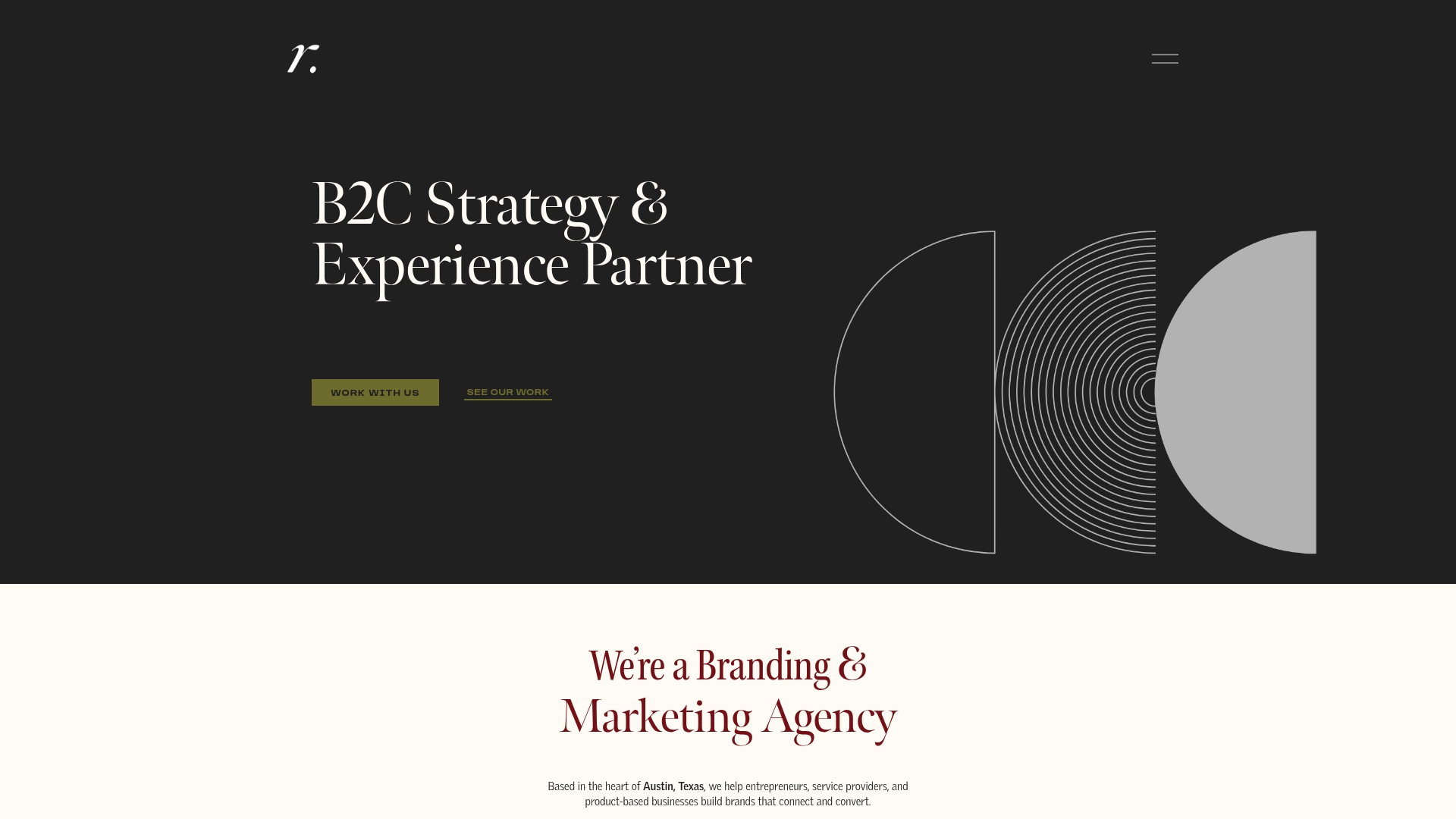How to Increase Brand Visibility with a Proven System

Learn what is brand marketing and why it matters for your business growth and client acquisition in a clear and comprehensive way.

Brand marketing is everywhere, shaping the way people talk about their favorite companies and choose where to spend their money. Most folks think it is all about flashy logos or catchy taglines, but that is missing the big picture. The real strength of brand marketing comes from something far deeper. Strong brands can charge higher prices and even lower their customer acquisition costs thanks to powerful psychological connections built over time. That hidden power is what separates the truly successful from the forgettable.
Brand marketing transcends traditional advertising by creating a comprehensive strategy that communicates a company’s core identity, values, and unique promise to its target audience. At its essence, brand marketing is about building meaningful connections that transform simple transactions into lasting relationships between businesses and their customers.
When exploring what is brand marketing, think of it as a holistic approach that goes beyond promoting products or services. It’s about crafting a distinctive narrative that resonates emotionally with your audience. Brand marketing focuses on building recognition, trust, and loyalty by consistently presenting a cohesive image across all communication channels.
Key elements of brand marketing include:
The fundamental purpose of brand marketing is to create a memorable and meaningful presence in consumers’ minds. Unlike direct product marketing that emphasizes immediate sales, brand marketing invests in long-term perception and reputation.
 It transforms businesses from anonymous entities into recognizable personalities with specific traits, values, and stories.
It transforms businesses from anonymous entities into recognizable personalities with specific traits, values, and stories.
Successful brand marketing achieves multiple strategic objectives:
By consistently delivering a compelling brand narrative, businesses can create powerful psychological associations that extend far beyond traditional marketing approaches. This strategic investment helps companies stand out in crowded markets, attract their ideal customers, and create sustainable competitive advantages.
Brand marketing represents a critical investment for businesses seeking sustainable growth and competitive differentiation. It transforms companies from mere product providers into meaningful, recognizable entities that connect deeply with their target audience. The strategic significance of brand marketing extends far beyond surface-level visibility, creating fundamental advantages that drive long-term business success.
In a marketplace saturated with options, brand marketing becomes the critical mechanism for establishing genuine credibility and consumer trust. Consumers do not just purchase products they purchase stories, values, and experiences. By consistently communicating a clear, authentic narrative, businesses can create emotional connections that transcend transactional relationships.
Key credibility-building aspects of brand marketing include:
Brand marketing generates substantial economic benefits by creating significant competitive differentiation. Strong brands command premium pricing, attract more loyal customers, and experience lower customer acquisition costs. When consumers perceive a brand as unique and valuable, they become less price-sensitive and more likely to recommend the business to others.
Competitive advantages derived from effective brand marketing include:
Effective brand marketing transforms businesses from anonymous market participants into recognized industry leaders.
This table outlines the economic and competitive advantages of strong brand marketing for businesses aiming for sustainable growth.
| Advantage | How Brand Marketing Delivers Value |
|---|---|
| Enhanced Customer Retention Rates | Emotional connections and loyalty encourage repeat business |
| Increased Market Positioning | Distinctive identity builds authority and recognition |
| Reduced Marketing Expenditure | Strong brands gain organic growth and referrals, lowering acquisition costs |
| Premium Pricing Power | Trust and recognition enable higher pricing vs. undifferentiated competitors |
| Resilience During Fluctuations | Memorability and loyalty help brands withstand competitive or economic challenges |
| By investing in strategic brand development, companies create powerful psychological associations that extend well beyond traditional marketing tactics. This approach enables businesses to not just survive but genuinely thrive in increasingly complex and competitive marketplaces. |
Brand marketing is a complex ecosystem of interconnected elements that work together to create a powerful, cohesive brand identity. Understanding these key components is essential for entrepreneurs and business owners who want to develop a strategic and impactful brand presence that resonates with their target audience.
Brand identity is the visual and verbal foundation that communicates a company’s essence at a glance. This includes the logo, color palette, typography, imagery style, and consistent messaging that instantly signal who you are as a business. These visual and linguistic signals create immediate recognition and emotional connection with potential customers.
Critical visual and verbal brand identity elements include:
Beyond visual aesthetics, brand marketing requires a clear strategic positioning that differentiates a business in the marketplace. This involves developing a unique value proposition that clearly articulates what makes your brand different and why customers should choose you over competitors. Strategic positioning transforms a generic business offering into a compelling narrative that attracts and retains ideal customers.
Core strategic positioning components involve:
The most powerful brand marketing transcends functional attributes and creates deep emotional resonance. Successful brands understand that consumers buy experiences and feelings, not just products. By crafting a brand identity that speaks to deeper psychological needs and aspirations, businesses can transform transactional relationships into genuine customer loyalty and advocacy.
This emotional connection is built through understanding customer psychology, consistently delivering on brand promises, and creating meaningful interactions that go beyond mere commercial transactions. The most memorable brands are those that make customers feel understood, valued, and part of something larger than a simple purchase.
Brand identity represents the strategic intersection between a company’s core values and audience expectations. It is a powerful communication tool that transforms businesses from anonymous entities into recognizable, relatable personalities that inspire trust, loyalty, and genuine connection. By thoughtfully crafting a brand identity, businesses create a unique psychological space in consumers’ minds.
Effective brand identity starts with deep audience understanding. This means moving beyond demographic data to comprehend the underlying emotional drivers, aspirations, challenges, and motivations of your target market. By developing a nuanced psychological profile, businesses can design brand experiences that feel personally meaningful and authentic.
Key psychological connection strategies include:
A compelling brand identity requires developing a distinctive personality that feels genuine and consistent. Brands are no longer just service providers but storytellers and companions in customers’ journeys. This means creating a persona with clear characteristics, values, and communication styles that feel human and approachable.
Essential elements of authentic brand personality development include:
Trust emerges from consistent, predictable interactions that align with audience expectations. Successful brand identity transforms abstract promises into tangible experiences that reinforce the brand’s core narrative across every customer touchpoint. This consistency creates a sense of reliability that distinguishes brands in crowded marketplaces.
Consistent brand experiences require intentional design across multiple dimensions, ensuring that every interaction reflects the brand’s fundamental promise and personality.
Below is a table summarizing the key components of brand marketing and their purpose for quick reference and understanding.
| Component | Description |
|---|---|
| Visual and Verbal Identity | Foundational elements like logo, color palette, typography, and consistent brand messaging |
| Strategic Positioning | Unique market differentiation, clear audience definition, and compelling brand story |
| Emotional/Psychological Connection | Building deep customer loyalty and advocacy by connecting with shoppers on a personal level |
| Brand Personality | Developing a distinctive, authentic persona and clear communication style |
| Consistent Brand Experience | Delivering reliable, coherent experiences across all customer touchpoints |
| By meticulously engineering these touchpoints, businesses create powerful emotional connections that transcend transactional relationships. |
Brand marketing transforms theoretical concepts into tangible strategies that create meaningful connections between businesses and their audiences. By examining successful real-world examples, entrepreneurs and business owners can understand how strategic brand marketing transcends traditional advertising and builds powerful, lasting relationships.
Successful brand marketing goes beyond product features to create compelling narratives. Companies that master emotional storytelling convert customers into passionate brand advocates. These organizations understand that consumers are not just purchasing products but investing in experiences, values, and shared identities.
Key storytelling brand marketing strategies include:
Brands that effectively differentiate themselves understand the power of unique positioning. Distinctive brand marketing turns potential commodities into memorable, sought-after experiences. By developing clear, compelling value propositions, businesses can stand out in saturated markets and attract their ideal customers.
Critical differentiation approaches involve:
The most powerful brand marketing creates seamless experiences that build trust through consistent messaging and interactions. Brands that maintain psychological coherence across all touchpoints transform transactional relationships into emotional connections. This approach requires meticulous design of every customer interaction, ensuring that the brand’s core promise remains authentic and recognizable.
Consistent brand experiences transcend individual transactions, creating long-term loyalty by making customers feel understood, valued, and part of a larger narrative.
 By engineering these strategic interactions, businesses can build enduring relationships that extend far beyond traditional marketing approaches.
By engineering these strategic interactions, businesses can build enduring relationships that extend far beyond traditional marketing approaches.
If reading about brand marketing opened your eyes to just how much clarity, consistency, and emotional connection matter for your business, you are not alone. Many entrepreneurs and small business founders struggle with moving beyond surface-level branding and one-off campaigns. The article you just explored spotlighted common pain points—feeling lost in a noisy market, lacking a cohesive narrative, and struggling to build true customer trust. You need a strategy that weaves your story into every touchpoint and makes your brand memorable for the right reasons.

Stop guessing what story your brand is telling. With Reasonate Studio, you get a proven approach built around The Aligned Impact Model™. This system uncovers, clarifies, and amplifies your brand’s unique strengths by focusing on the same elements you just read about—such as audience psychology, differentiated messaging, and consistent experiences. Experience hands-on strategy and design that turn your brand into a trusted presence and unlock sustainable growth. Ready to see how your brand can cut through the noise and truly resonate? Start your transformation here. Act now to move from confusion to confidence in every marketing decision.
Brand marketing is a comprehensive strategy that goes beyond promoting products or services. It focuses on building recognition, trust, and loyalty by creating an emotional connection with the target audience through a cohesive brand identity and narrative.
Brand marketing is critical for establishing credibility and trust in a competitive marketplace. It transforms companies from product providers into recognizable entities that resonate with customers, leading to lasting relationships and enhanced consumer loyalty.
The key components of brand marketing include visual and verbal brand identity, strategic positioning and messaging, as well as creating emotional and psychological connections with consumers. These elements work together to build a compelling and cohesive brand presence.
Effective brand marketing generates competitive advantages by establishing unique market positioning, enhancing customer loyalty, and allowing brands to command premium pricing. It contributes to lower customer acquisition costs and facilitates greater resilience during market fluctuations.